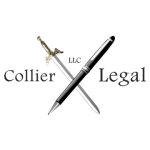How to Patent Biologics in Clinical Development

Navigation
- Why Biologic Patents Matter in Clinical Development
- What Kinds of Biologics Can Be Patented?
- Key Patent Claim Strategies for Biologics
- When to File a Biologic Patent
- Navigating Section 101 and 112 for Biologics
- Coordinating Biologic Patents with FDA Strategy
- Common Mistakes When Trying to Patent a Biologic
- Conclusion: Protect Your Biologic Pipeline with Strategic Patents
Patenting a biologic drug candidate is one of the most important steps in securing exclusivity, attracting investors, and paving the way for FDA approval. Whether you’re developing monoclonal antibodies, fusion proteins, or RNA-based drugs, building a strong biologic patent strategy early in the clinical development process is essential.
In this post, we cover how to patent biologics effectively — including what to claim, when to file, and how to avoid common mistakes during preclinical and clinical stages.
Why Biologic Patents Matter in Clinical Development
A biologic patent doesn’t just protect your invention — it protects your business model. Without a clear IP position, you may lose investor interest, jeopardize licensing potential, or face early biosimilar competition.
Biologics are often complex, high-cost molecules with long development timelines. A thoughtful patent strategy helps:
Preserve U.S. and international patent rights
Maximize patent term and exclusivity
Secure freedom to operate in crowded therapeutic areas
Support future enforcement and FDA interactions
For broader context, see Biotechnology Intellectual Property Strategies for Innovators.
What Kinds of Biologics Can Be Patented?
Many classes of therapeutic biologics are eligible for patent protection, including:
Monoclonal antibodies (including bispecific, humanized, or Fc-engineered forms)
Fusion proteins and engineered cytokines
Peptides and protein scaffolds
mRNA and siRNA drugs
Gene and cell-based therapies, including CAR-T platforms
Antibody-drug conjugates (ADCs) and other targeted payloads
Each biologic type may be protected through a mix of composition of matter, method of treatment, formulation, or manufacturing process claims. If you’re unsure whether your invention qualifies, visit our Biological Patents page.
Key Patent Claim Strategies for Biologics
Each biologic type may be protected through a mix of composition of matter, method of treatment, formulation, or manufacturing process claims. For a broader overview of how these fit into the life sciences landscape, visit our guide to Biotechnology Patents.
1. Composition of Matter
This is the most valuable form of protection. You can patent biologics by claiming:
Amino acid or nucleic acid sequences
Structural elements (e.g., CDR regions of antibodies)
Modified backbones, linkers, or conjugation chemistry
2. Method of Treatment
Even if a biologic structure is known, new indications or patient populations may be patentable. For example:
“A method of treating metastatic melanoma using Biologic X”
“Administering Biologic Y to patients with high PD-L1 expression”
3. Formulation and Delivery
Stability, dosing route, and delivery innovations (e.g., lipid nanoparticles, intranasal administration) often justify new patent filings.
4. Manufacturing and Expression Systems
For biologics made using novel host cells, purification steps, or yield-boosting processes, process patents can offer valuable fallback protection.
When to File a Biologic Patent
Preclinical Filing
Early filings help preserve novelty before public disclosures, grant submissions, or journal publications. Many biotech companies use provisional patent applications to secure a priority date while refining data.
You can learn more in our post: How to File a Provisional Patent Application That Actually Helps.
Filing Post-IND or Phase I
Later filings may benefit from:
Demonstrated binding affinity
Pharmacokinetic or toxicology data
Confirmed mechanism of action
You can layer filings over time — starting with a broad composition claim, and adding more focused patents based on clinical data.
Navigating Section 101 and 112 for Biologics
Biologics are often challenged under U.S. patent law for:
Section 101 ineligibility (e.g., natural products like unmodified proteins or genes)
Section 112 issues such as lack of enablement or written description
The Supreme Court’s decision in Amgen v. Sanofi (2023) emphasized the need to support broad biologic claims with multiple working examples. For example:
Don’t claim “all antibodies that bind Target X”
Instead, provide data for several distinct antibodies and show structural commonalities
For complex claims like these, understanding Markush structures in patents can be helpful.
Coordinating Biologic Patents with FDA Strategy
Biologic developers must coordinate their IP and regulatory efforts. The Biologics Price Competition and Innovation Act (BPCIA) provides 12 years of market exclusivity, but:
You can also list patents in the FDA Purple Book
Consider using Patent Term Extensions (PTEs) if approval is delayed
Sequence your filings to match FDA interactions (e.g., IND, BLA)
Understanding the Leahy-Smith America Invents Act (AIA) is also critical for planning multi-layered filing strategies.
Common Mistakes When Trying to Patent a Biologic
Premature Disclosure
Publishing results, presenting at conferences, or including data in PMA filings before patenting can destroy rights — especially outside the U.S. Always file before disclosing your biologic publicly.
Weak Provisional Filings
A poorly drafted provisional with vague descriptions or no experimental data may not support later claims. Treat your provisional like your first line of defense.
Inadequate Functional Support
Claiming an antibody “that binds antigen X with high affinity” won’t hold unless you provide multiple examples and supporting data.
Lack of Coordination
Teams often move on parallel but uncoordinated tracks: regulatory files an IND, legal files a patent, and science submits a paper — all at different times. Align these timelines early.
Conclusion: Protect Your Biologic Pipeline with Strategic Patents
Biologics are among the most valuable assets in the life sciences — but only if protected early and intelligently. Whether you’re moving from discovery to clinic or preparing for Series A funding, your biologic patent strategy must be tightly aligned with your R&D and regulatory plans.
Ready to secure your innovations?
Schedule a consultation with an experienced patent attorney to discuss your biologic patent strategy.

About
Attorney Collier started his own law firm straight out of law school and has been practicing law in Ohio for 5+ years. During that time, Joe focused on business law and litigation, gaining some exposure to intellectual property law. While running his firm in 2021, Joe decided to go back to school and get his patent license. Since then, Attorney Collier has been focusing on protecting innovators and entrepreneurs through his expertise in intellectual property and business law.
